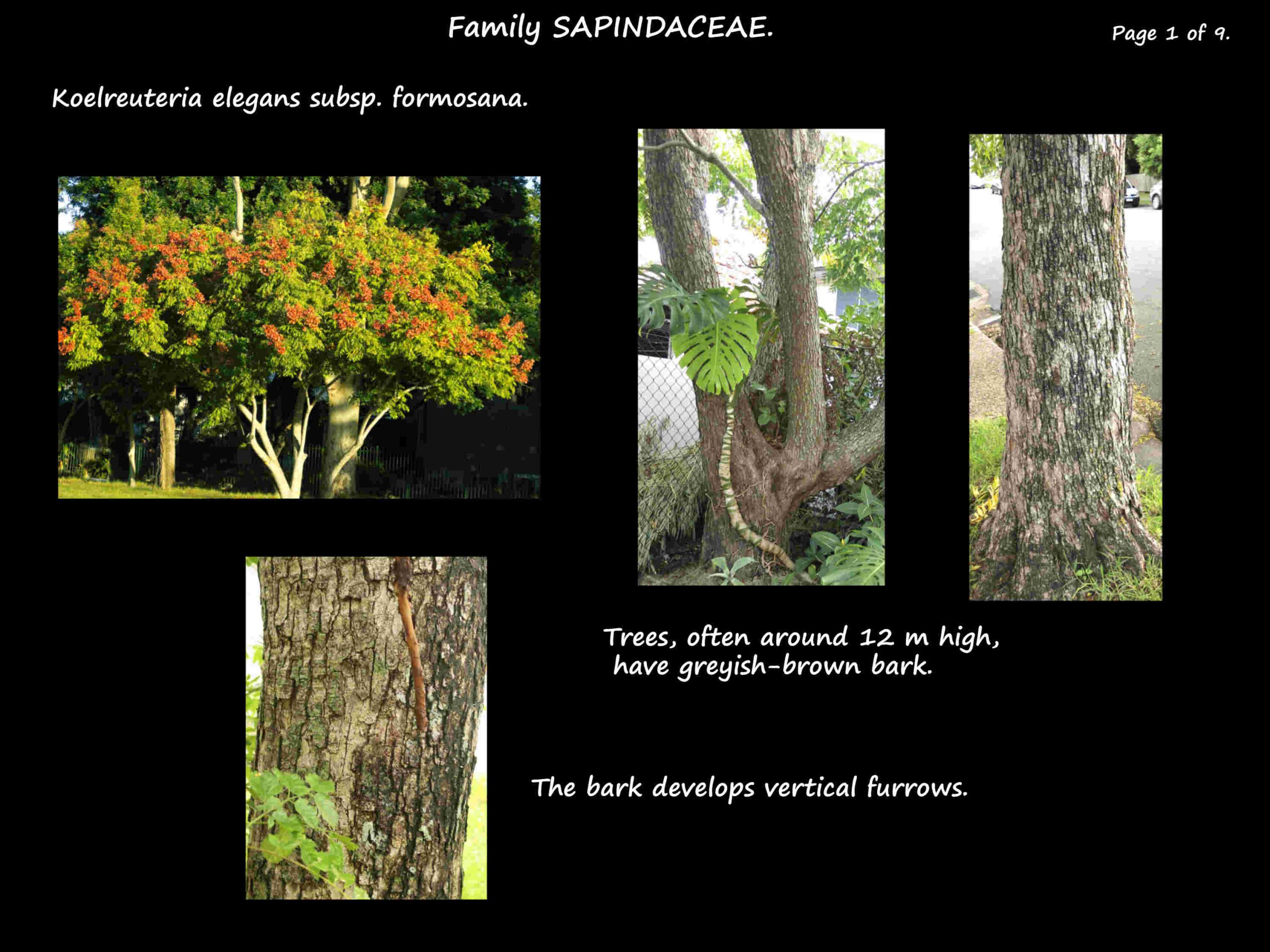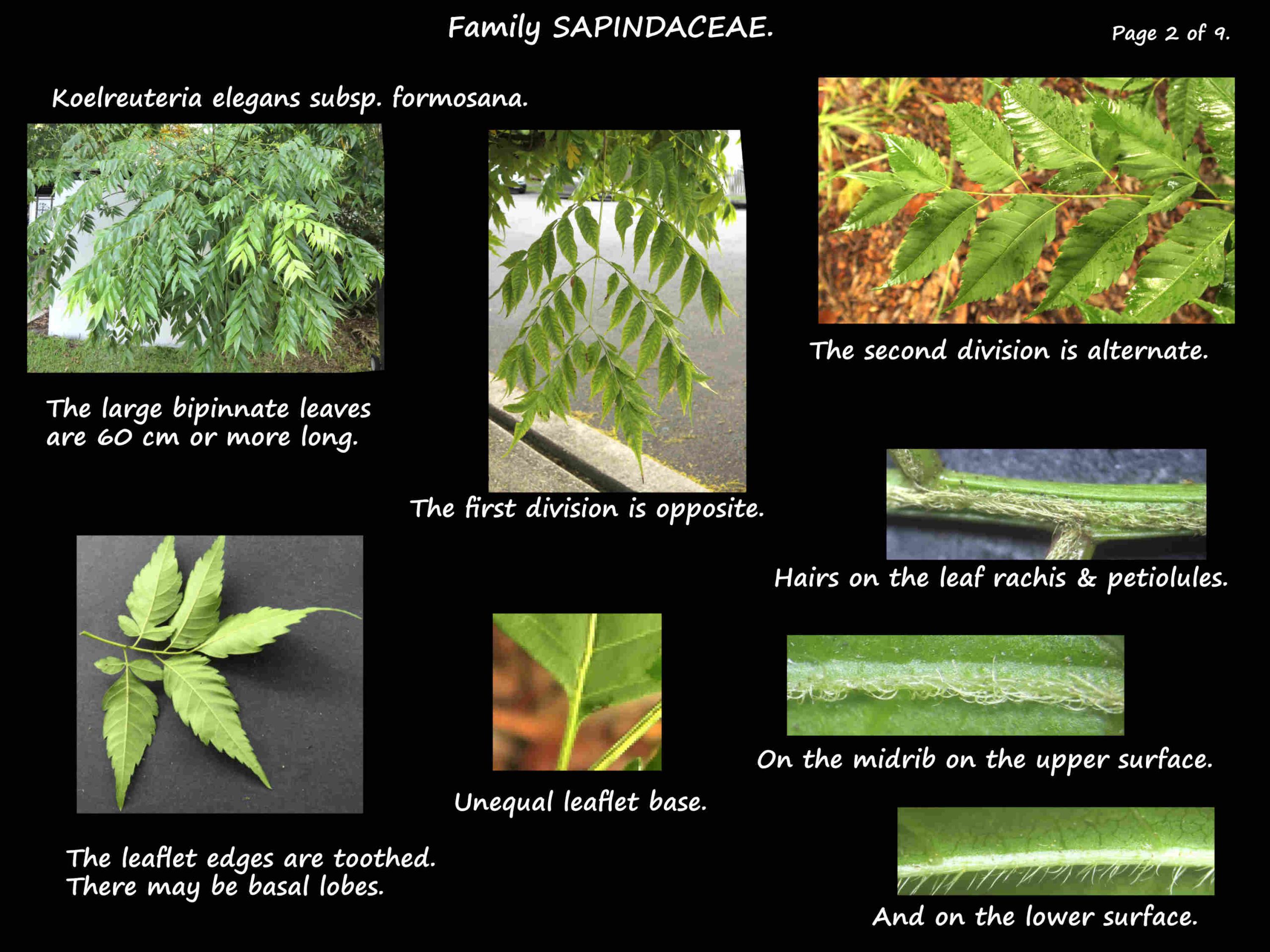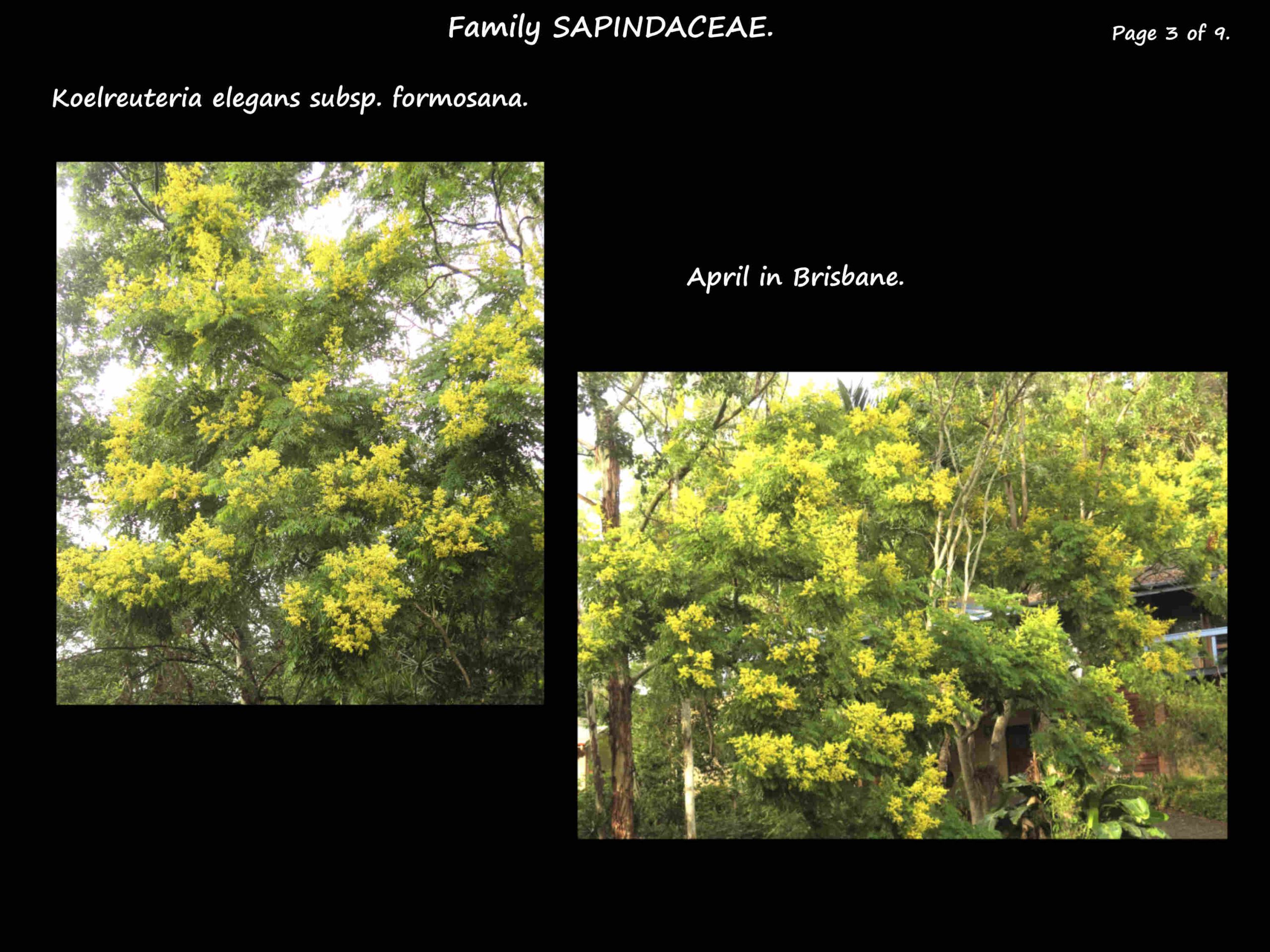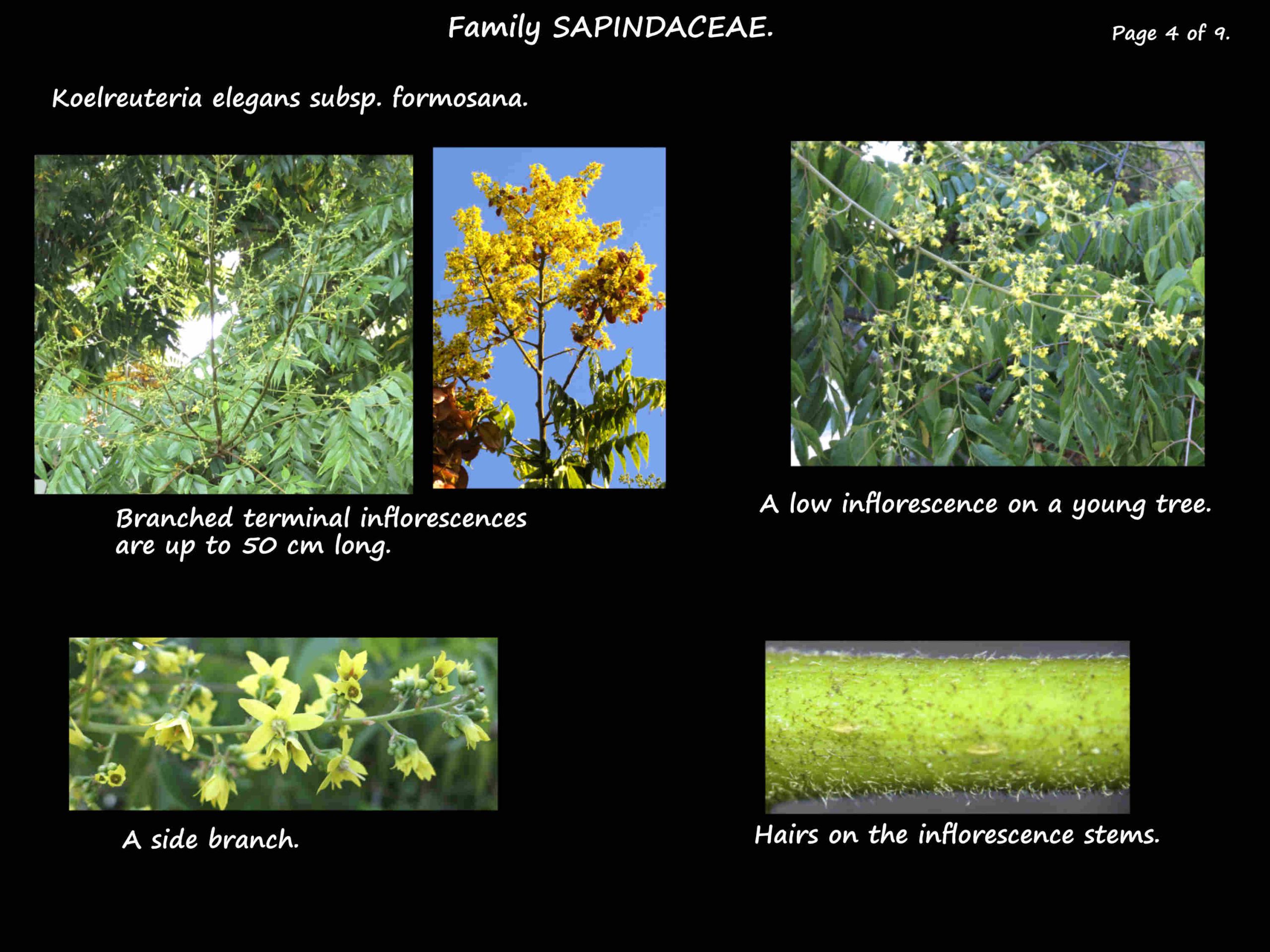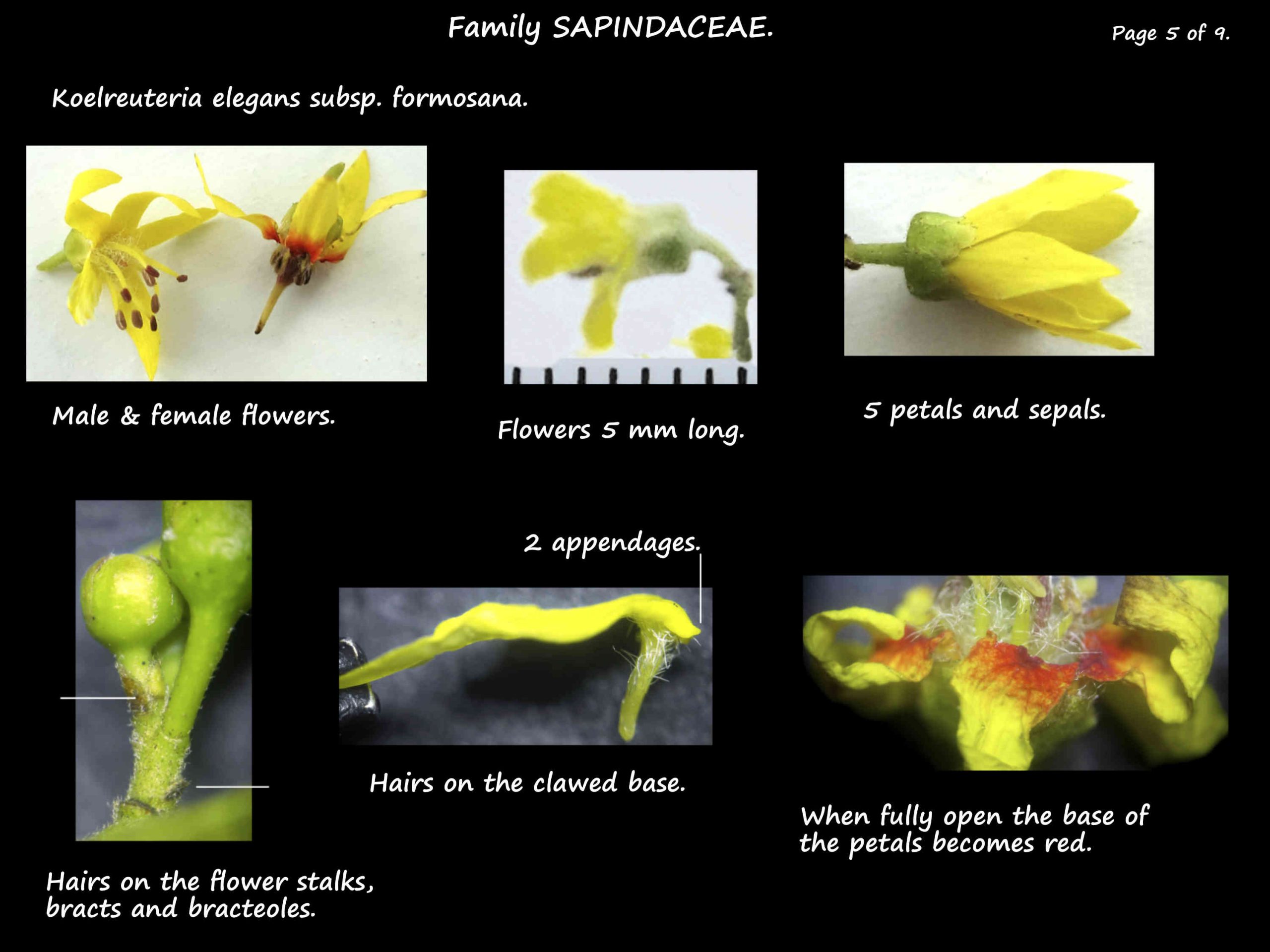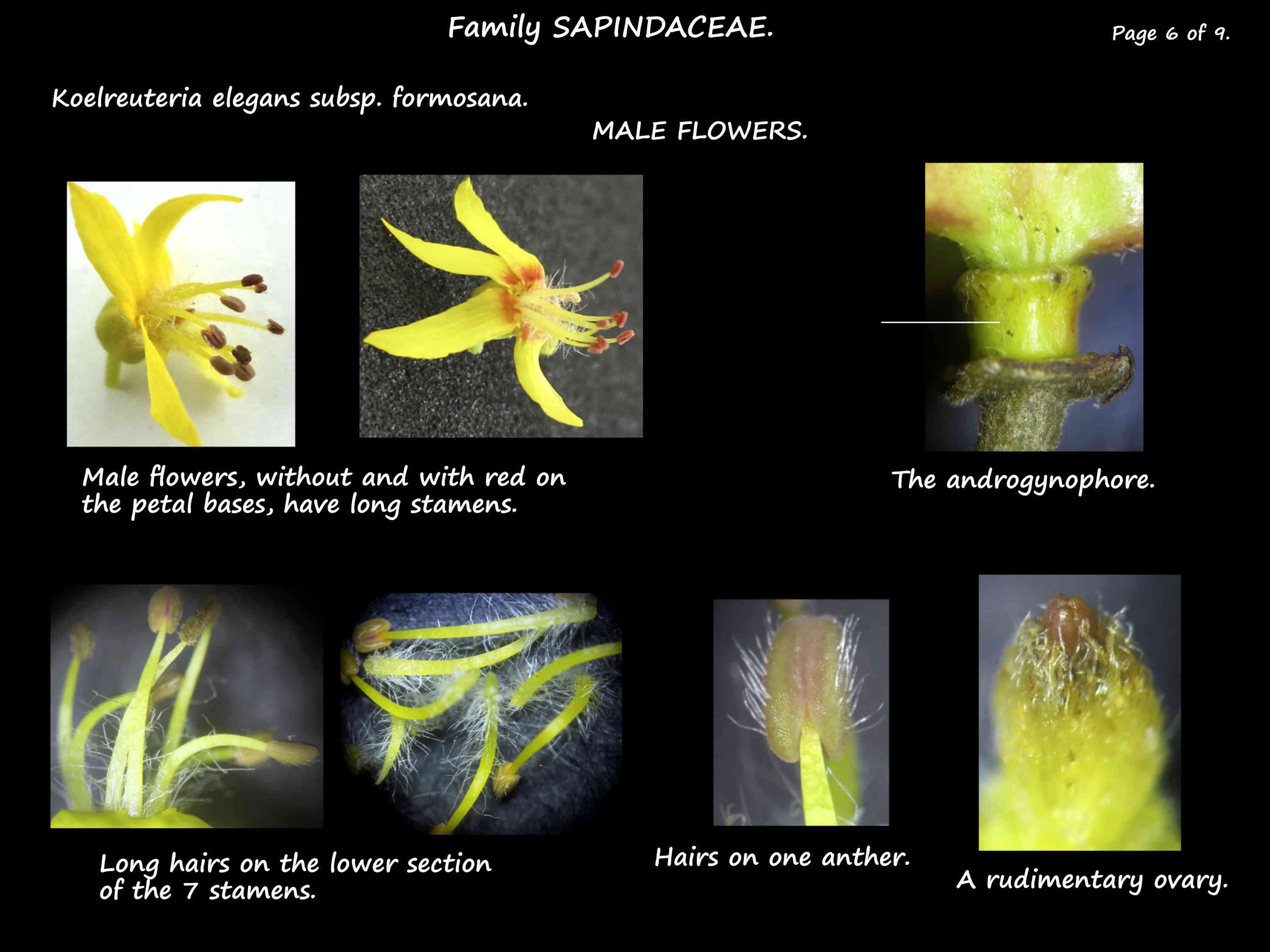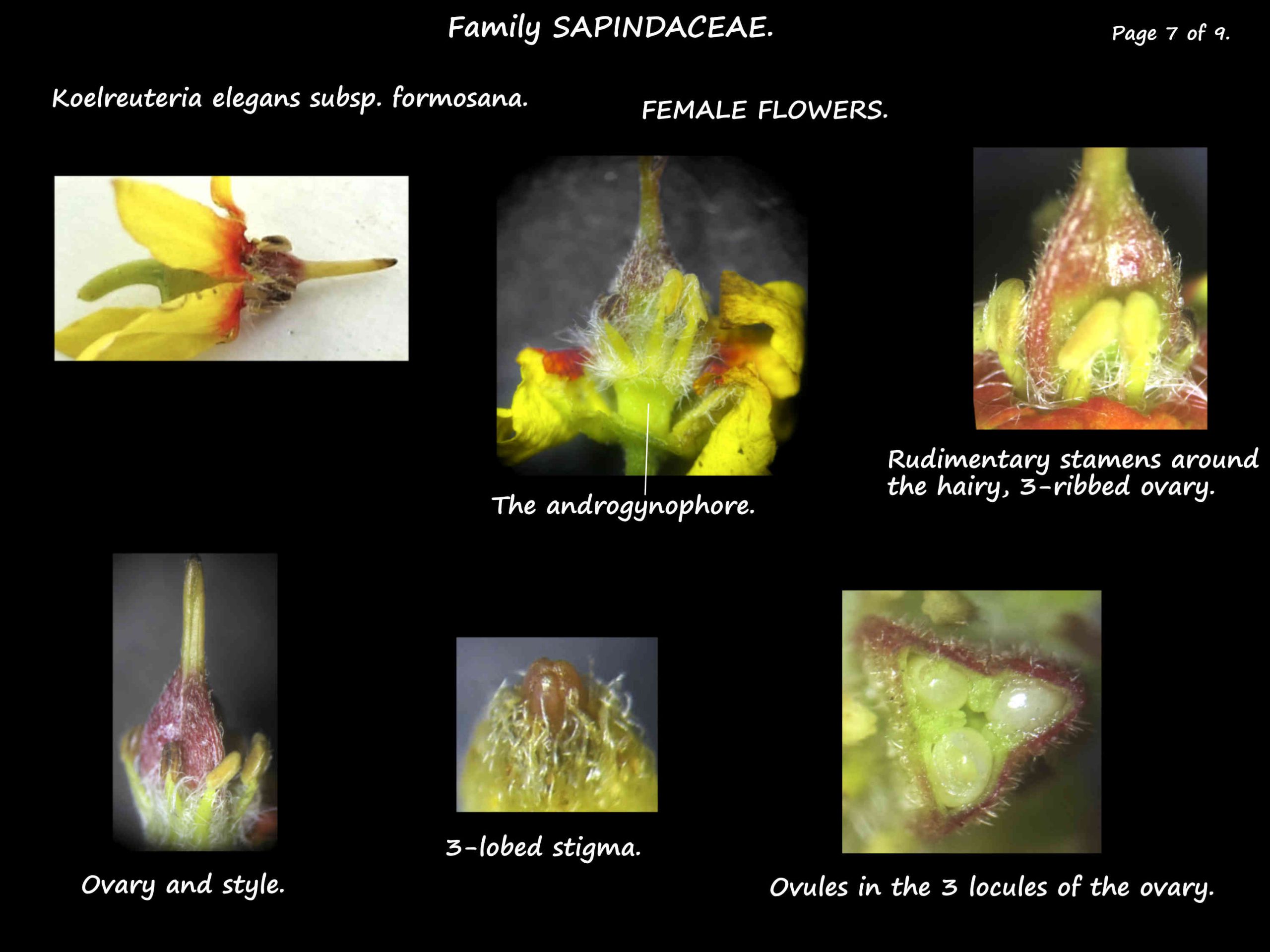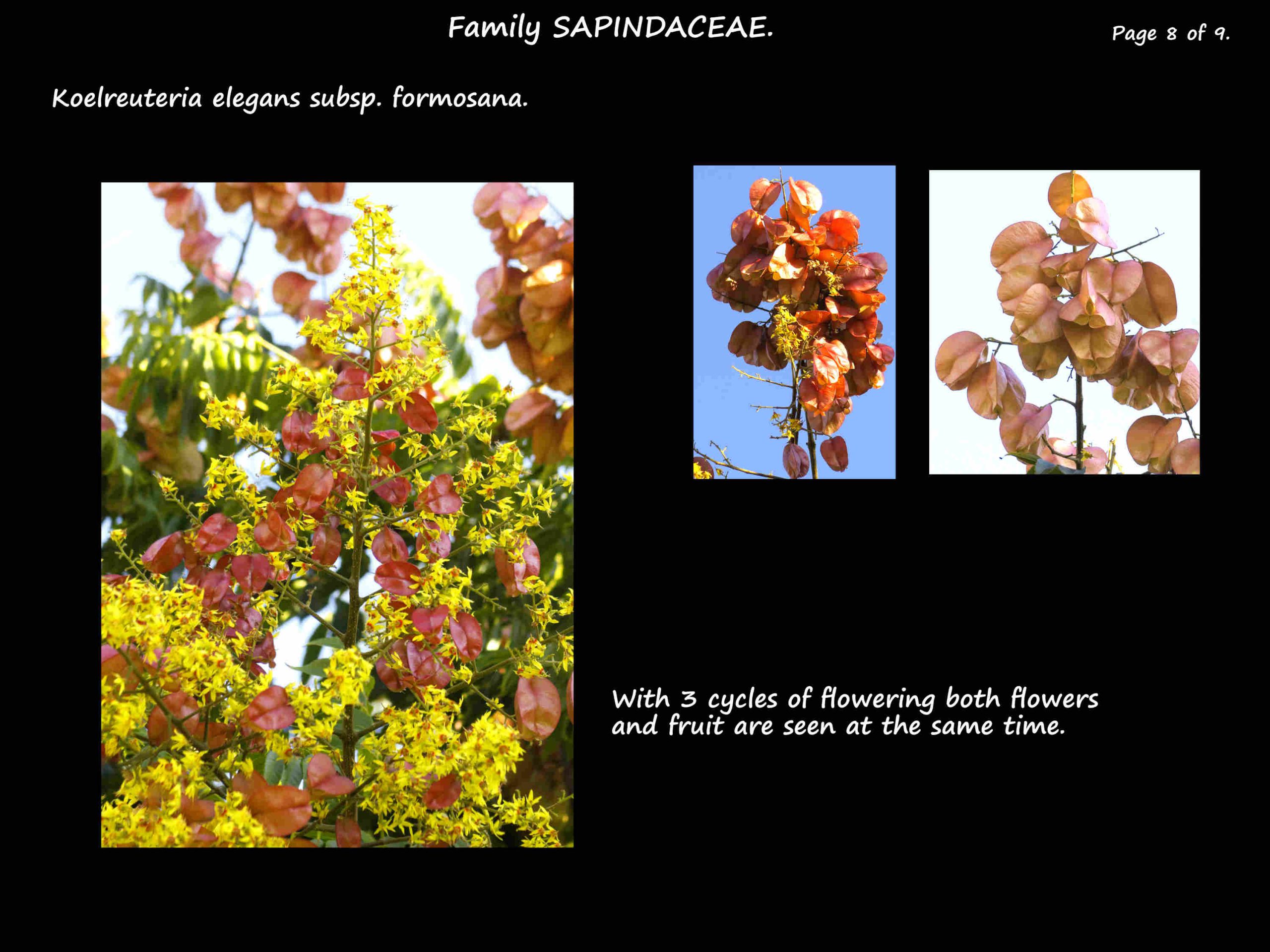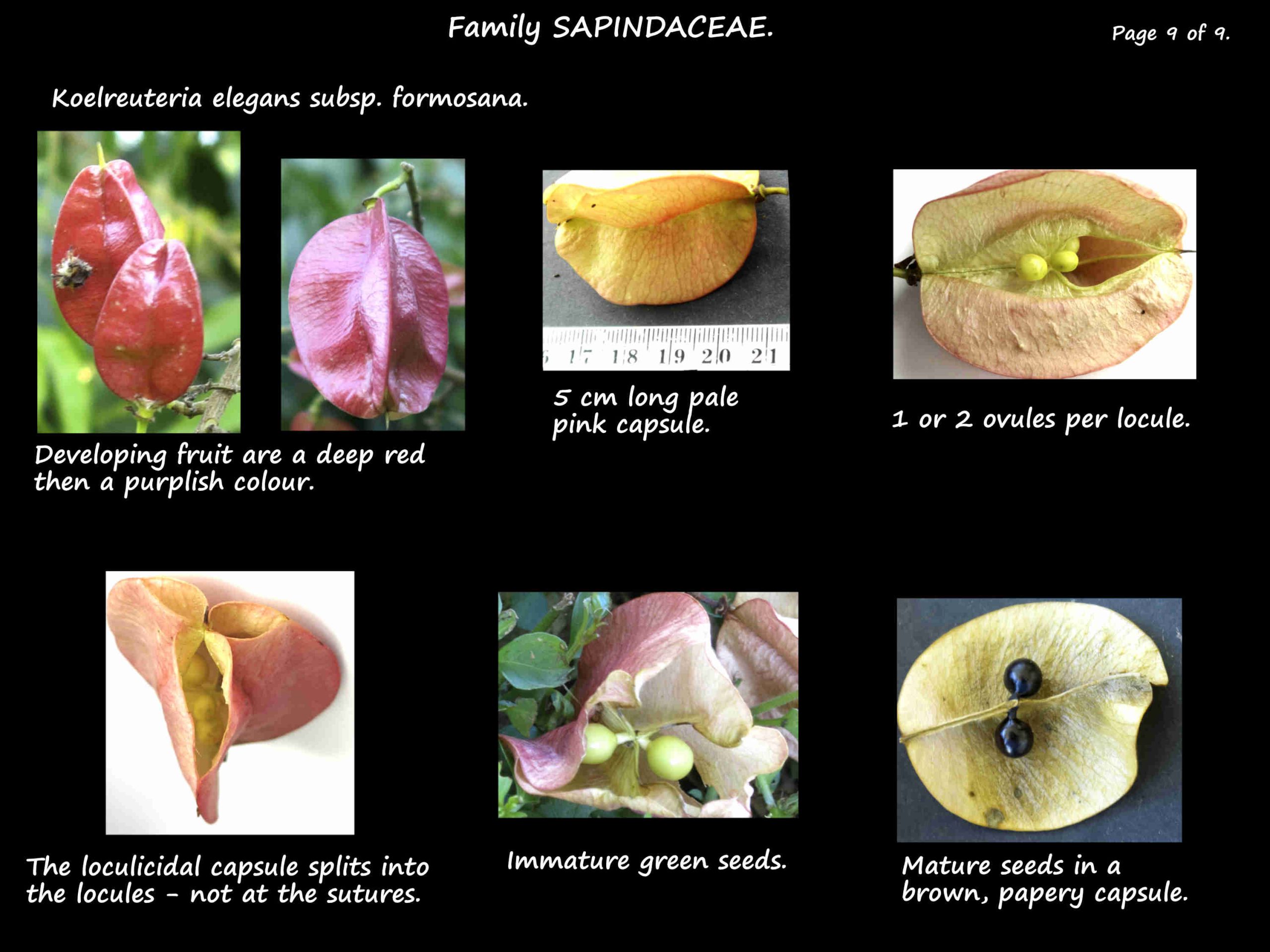Koelreuteria elegans subsp. formosana.
There are three species of Koelreuteria in Family Sapindaceae and they are native to Asia.
K. elegans subp. formosana, the Golden Rain tree, is naturalised around Brisbane.
The trees grow to around 12 m high but can be more.
The trunk has furrowed, greyish-brown bark.
Small branches have fine brown hairs and pale lenticels (spots).
The alternately arranged, bipinnate leaves are on petioles around 5 cm long.
The ovate leaves can be 60 cm or more in length and 45 cm wide.
Each leaf has 5 to 17 leaflets on petiolules a few mms long.
The ovate to lanceolate leaflets are up to 10 cm long and 4 cm wide.
They have a very unequal (oblique) base and a long tapering tip.
The edge may be smooth but is usually toothed and the lower half may have lobes.
There may be a few hairs.
The branched, terminal inflorescences, on hairy stems (peduncles), are up to 50 cm long.
The flowers, around 5 mm across, are on short stalks (pedicels).
They have 4 or 5 hairy green sepals.
The 4 or 5 petals are around 6 mm long and 2.5 mm wide.
They are yellow with a red base.
The hairy clawed base has 2 scaly appendages.
There is an androgynophore holding the stamens and ovary.
The 7-8 or 4-5 stamens have hairs on the filaments.
In male flowers they extend beyond the corolla.
In female flowers the stamens are small with the anthers lying beside the ovary.
The hairy ovary, of 3 carpels, has 3 locules that form ribs.
Each locule has 1 or 2 ovules.
There is a single style with a small stigma.
The ovary is rudimentary in male flowers.
The plants are unusual in that the male and female flowers open in cycles.
Female flowers open first, then the males then a second lot of females.
The fruit are inflated, 3-ridged, ellipsoidal capsules around 4 to 5 cm long.
The papery surface is veined.
Initially a bright red they fade to pink then brown.
Each of the 3 locules has one or two, 5 mm black seeds.
K. elegans subsp. formosana is a weed but the other two species are sold in Australia.
K. paniculata has mostly pinnate leaves but also some bipinnate.
Its leaflets are larger than K. elegans subsp. formosana and the capsules more elongated.
Koelreuteria bipinnata has bipinnate leaves.
J.F.
